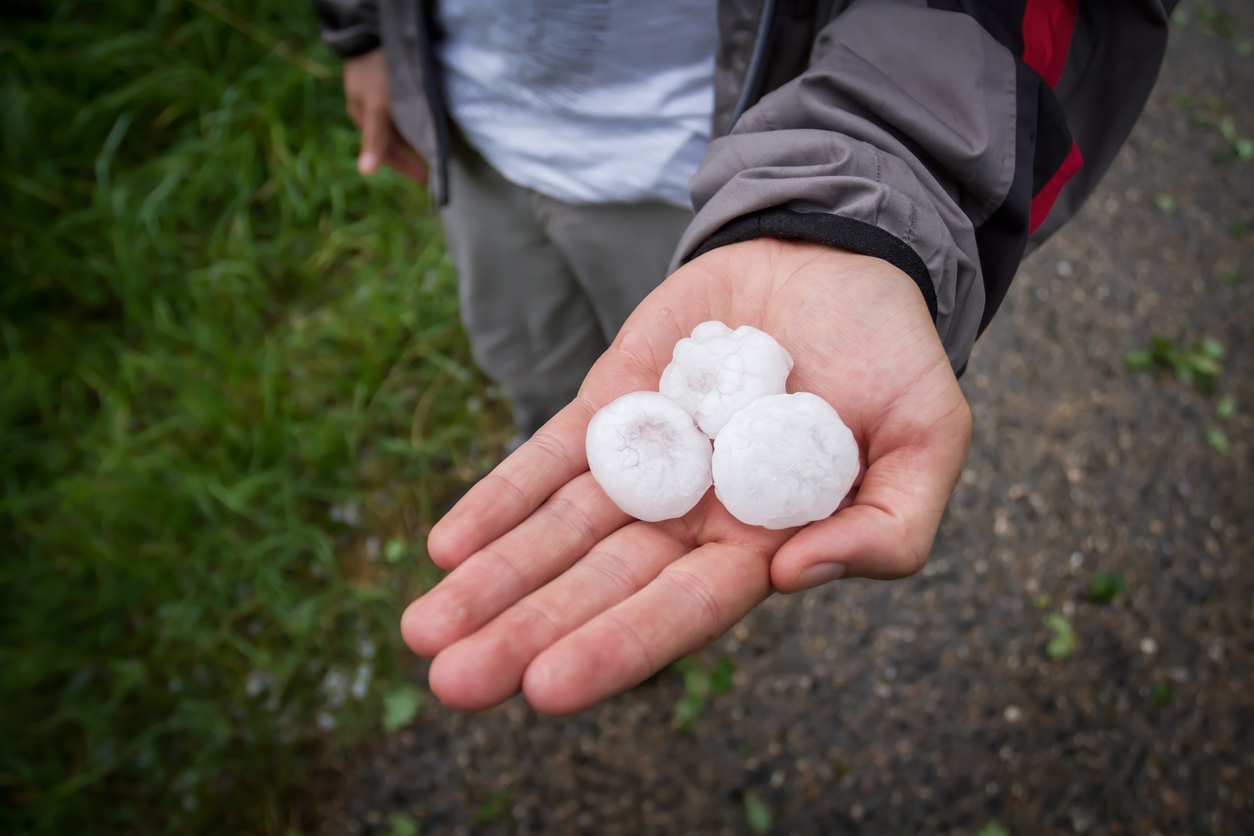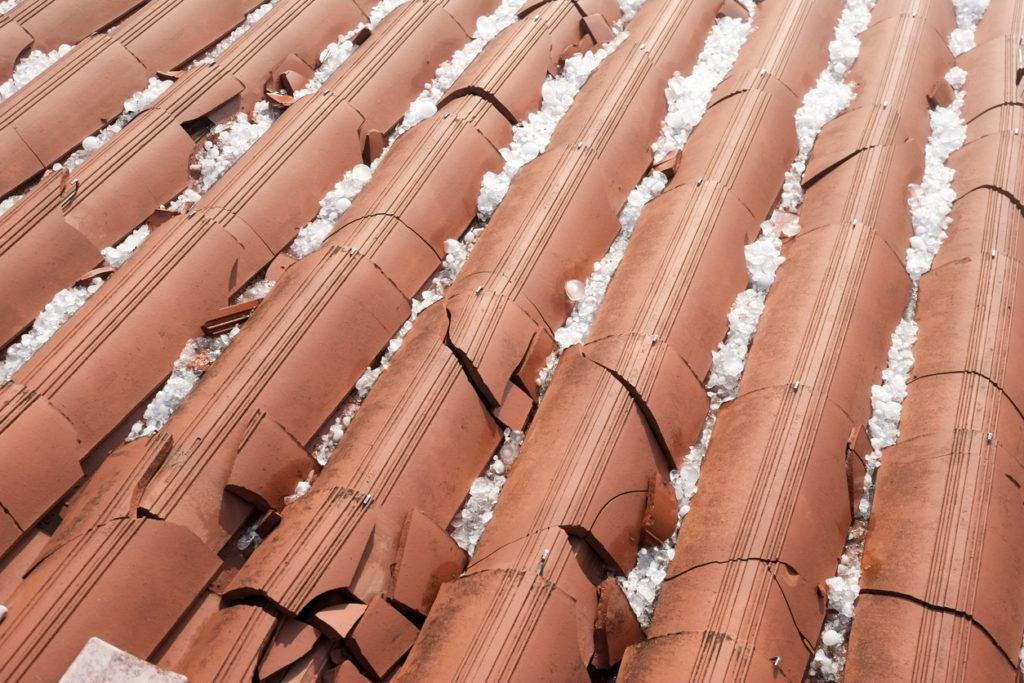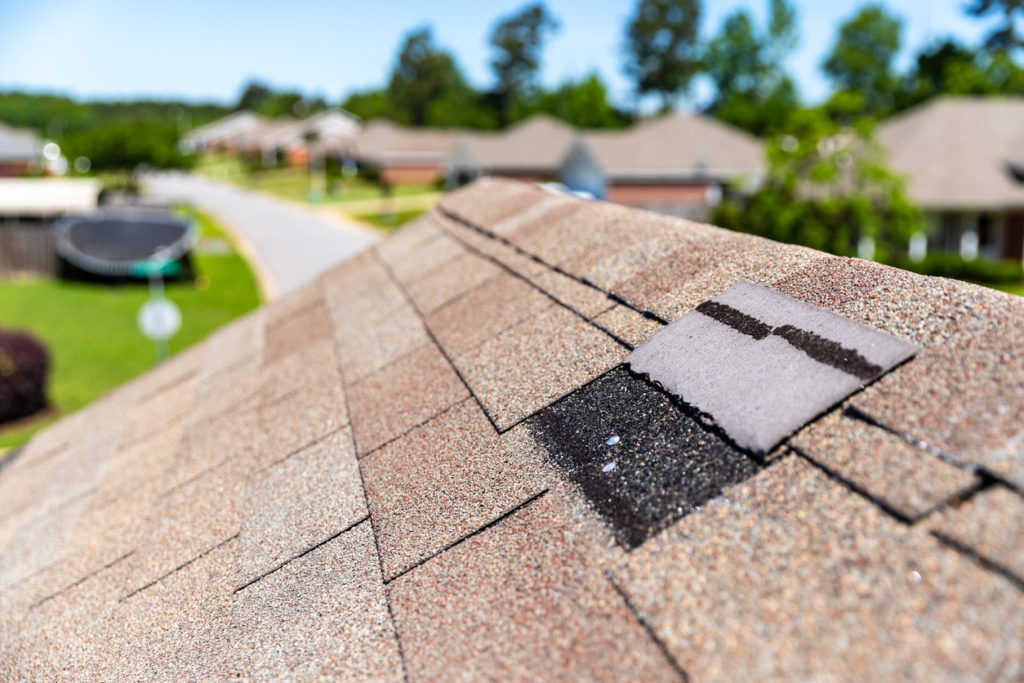
If there has been windy weather or a hailstorm, you might not realize how much it has damaged your roof. So, what are some signs of wind/hail storm damage you should look for?
If you have no idea what to look for and take too long to discover damage to your roof, the damage could escalate to the extent of destroying the materials or personal property under the roofing system. Luckily, several signs can help tell when wind or hail have damaged your roof:
What Causes Damage to the Roof?
During a storm, your roof could get damaged because of falling debris, wind, or hail. Roof damage due to hail is typical, affecting homes across the country but especially in East Texas. Soon after a storm, you only need to look at granules on the ground near gutter downspouts and balls of ice to know the extent of the damage to your roof.
Apart from damaging the roof’s surface, left unaddressed hail damage may also lead to leaks and structural damage. Therefore, you’re likely to notice a distortion in your roof. In that case, you shouldn’t worsen matters by trying DIY. Having a roofing contractor assess and correct the damage is always the right thing to do as this can lead to big problems.
While new roofing shingles may resist wind damage initially, they start to loosen with continued exposure to extremely windy weather. The worst damage may occur when the wind pulls off poorly installed shingles. Additionally, the wind carries debris and causes objects such as tree branches to fall onto the roof, creating damage.

Signs of Roof Damage from Wind or Hail Storms
As soon as you notice signs of damage after windy weather or a hailstorm, reach out to a professional roofing contractor for assessment and remediation. Here are a few things to keep an eye out for:
1. Large Hail in the Lawn
During or after a hail storm, you should look out for signs of hail over quarter size on the lawn. This means that your roof took a beating from it and could be damaged. You have to give your roof a close look soon after the storm. You do not have to go up the roof yourself, but should ask a professional roofing expert to inspect the roof. The beauty of working with a professional is that they can fix the damaged areas and leave you with a properly functioning roof.
2. Dented Metal Roofing
After a severe hailstorm and a barrage of falling debris, metal roofing panels will likely have dents, which you can see right from your yard. With dented panels, your roof’s seams and or screws could get damaged too which allows for leaks and is covered by insurance. When tree branches and other debris fall onto your roof at high speeds, they can functionally damage metal and puncture the shingles and cause holes. This can lead to leaks and loosened shingles and should be fixed immediately.
3. Torn, Creased, or Missing Roof Shingles

As your roof ages, the shingles are likely to get torn or creased from wind damage. However, high winds can completely remove the shingles. So, if you notice unusual shingle issues after high wind, it is possible that your roof is damaged and requires repair. Make a habit of checking the roof soon after every large storm to find missing or torn shingles that could allow water to sip through to your home. In that case, you need to have the missing shingle replaced quickly. If there’s only one missing shingle, you can fix it yourself if you can get on the roof with some shingle nails and a hammer.If you cannot scale the roof yourself, call a roofing specialist and get them to help you with a free inspection and repair.
4. Dark Spots on the Roof
Did you know that severe hail can completely remove the rock granules that coat asphalt shingles? When that happens, you’re likely to notice small dark spots, indicating the place where the hail impacted. This is usually a sign of severe hail damage from which the shingles can no longer shed water correctly. Further, the dark spots of exposed asphalt when exposed to the hot sun will get damaged further by lack of UV ray blocking granular coating. A roof’s longevity gets reduced drastically when a large number of grit is worn off from the shingles. The granular coating of small rocks will be found in gutters, downspouts, and even driveways and flowerbeds around the house as a result of the damage.
5. Creased Shingles
It is not easy to tell the presence of creased or cracked shingles in your roofing from the ground. That’s because some cracks are not usually visible from the ground yet cause severe issues in the long term. If you can, climb onto the roof and inspect it for creases or cracks in the top of the shingles. With cracked shingles, your roof can still function perfectly well. However, if left unattended, it can lead to more severe problems down the road as those shingles are likely to be blown off the roof when another storm comes.
6. Damaged Soffit and Fascia
The fascia is the long piece hanging along the roof’s edges to protect it from water damage. On the other hand, the soffit is a slight overhang connecting the bottom of the roof to the walls. One of the adverse effects of a storm and high wind is damage to the roof’s soffit and fascia. That can expose your home to additional harm by allowing water into your attic spaces.
7. Damaged Siding and Gutters
The roof’s sidings and gutters are as necessary as the shingles and internal structure. Therefore, damaged gutters and siding are indicators of a roof that has taken a beating from windy weather and a hailstorm. Look for signs like dented gutters and broken siding. Apart from the dents, you need to check the siding for other signs of damage. The gutters are wind damaged if you see twisting or sagging where the water flow isn’t draining as expected. If the water flow gets blocked by damaged gutters or even fallen debris, your roof could get exposed to more severe damage.
Wrapping It Up
If your roof is damaged in any of the ways above, after a hailstorm or high wind, the best thing you can do is to ask for a roofing expert to have your roof fixed. That will not only prevent further damage to your roof but also prolong its life. So don’t hesitate to reach out to us for help!
